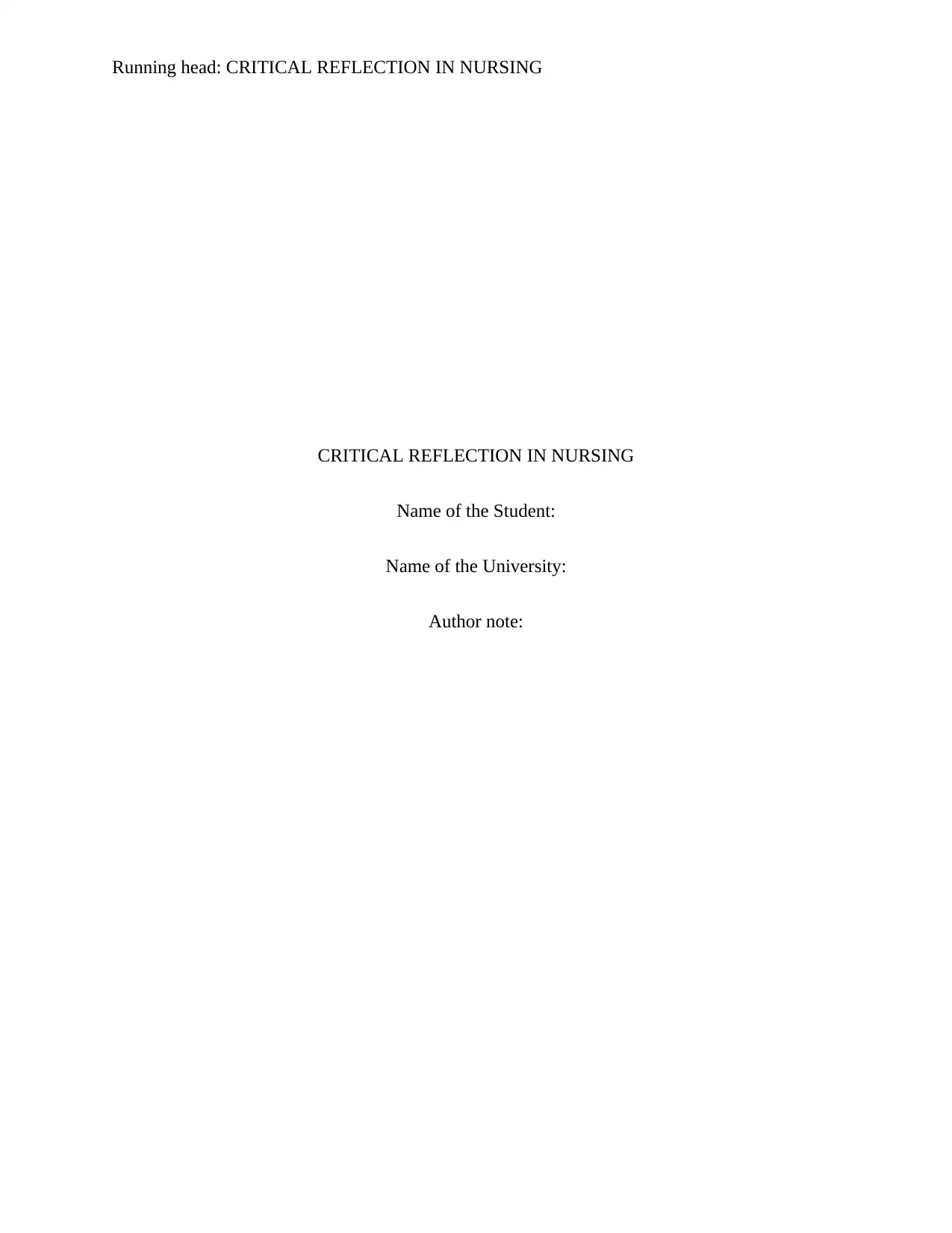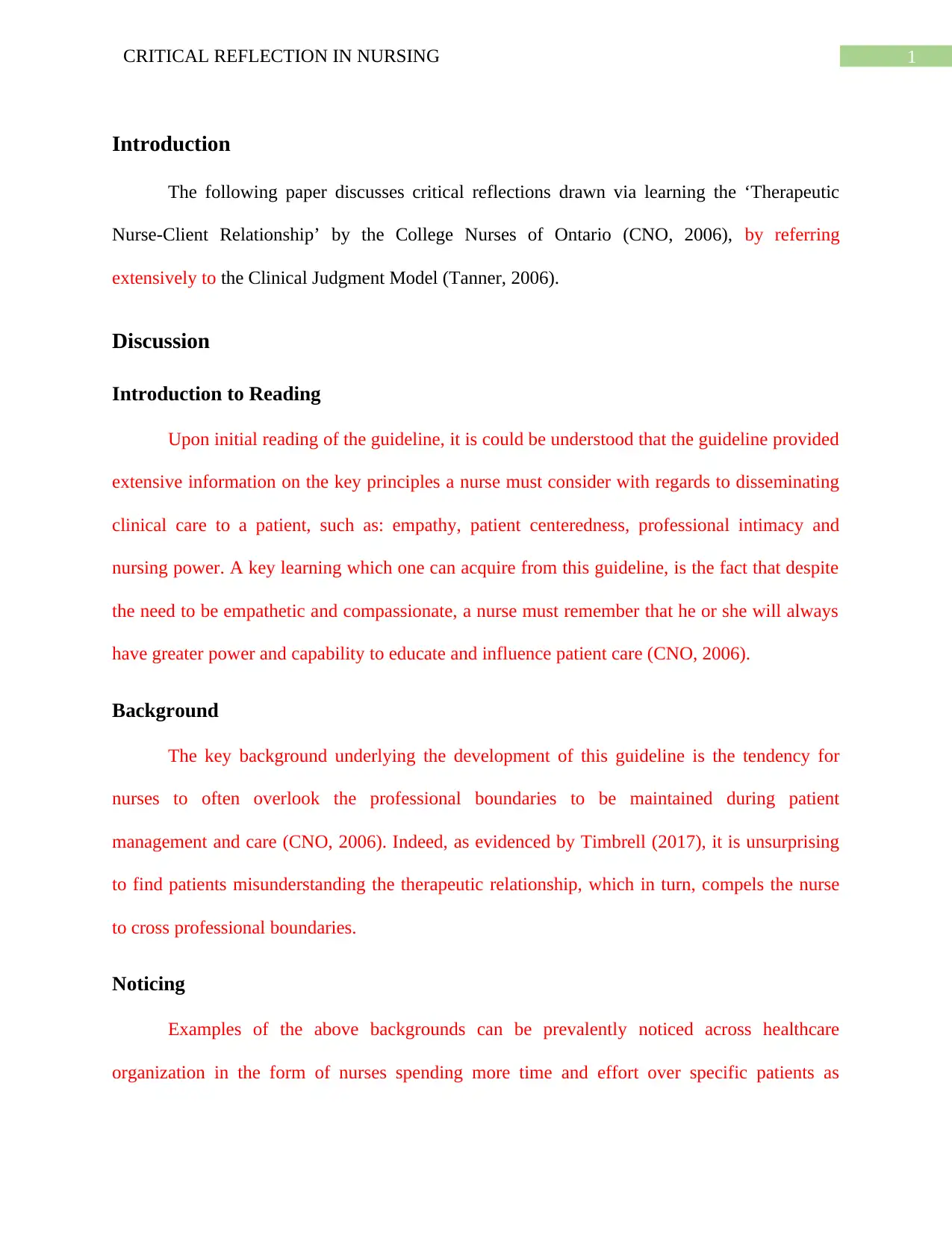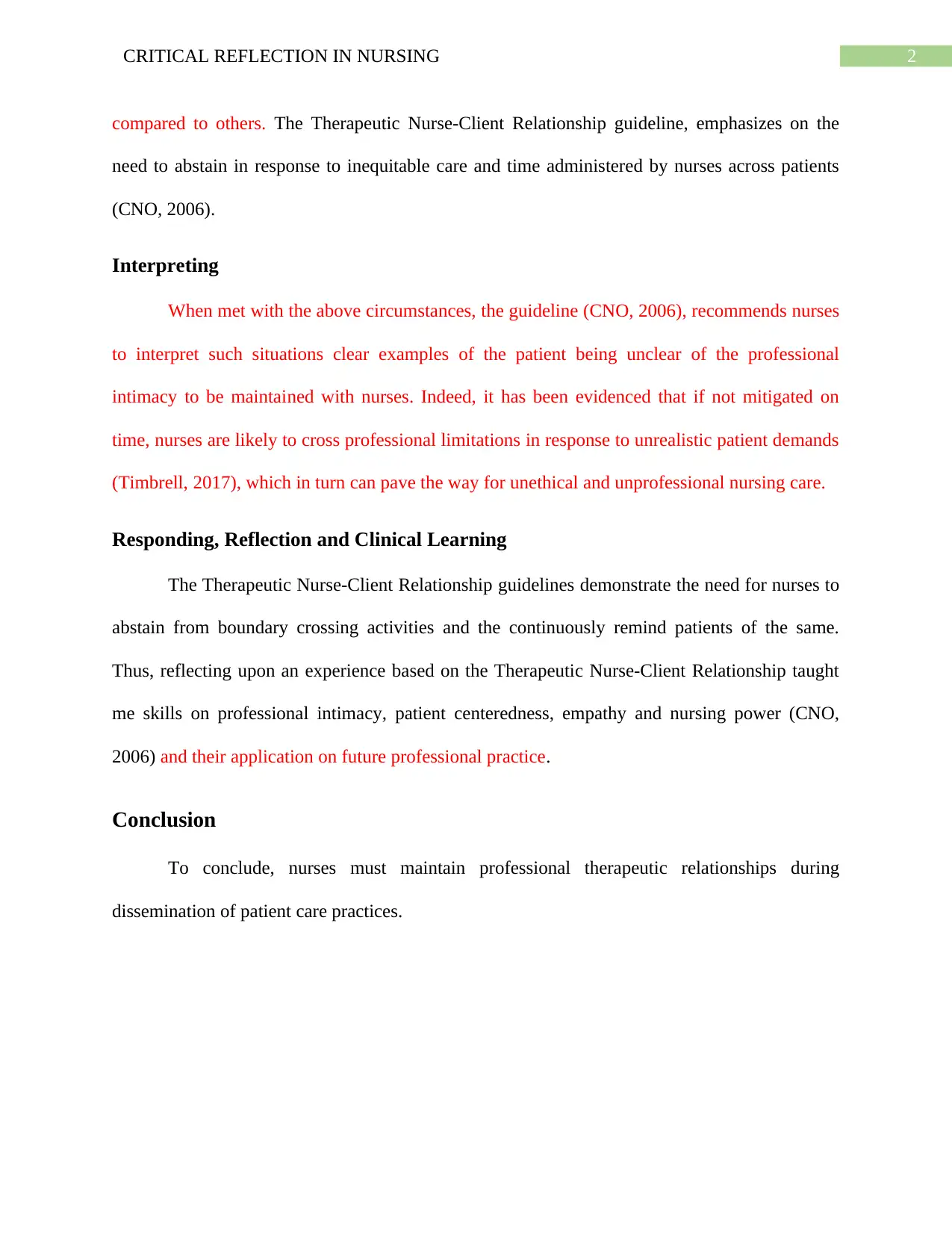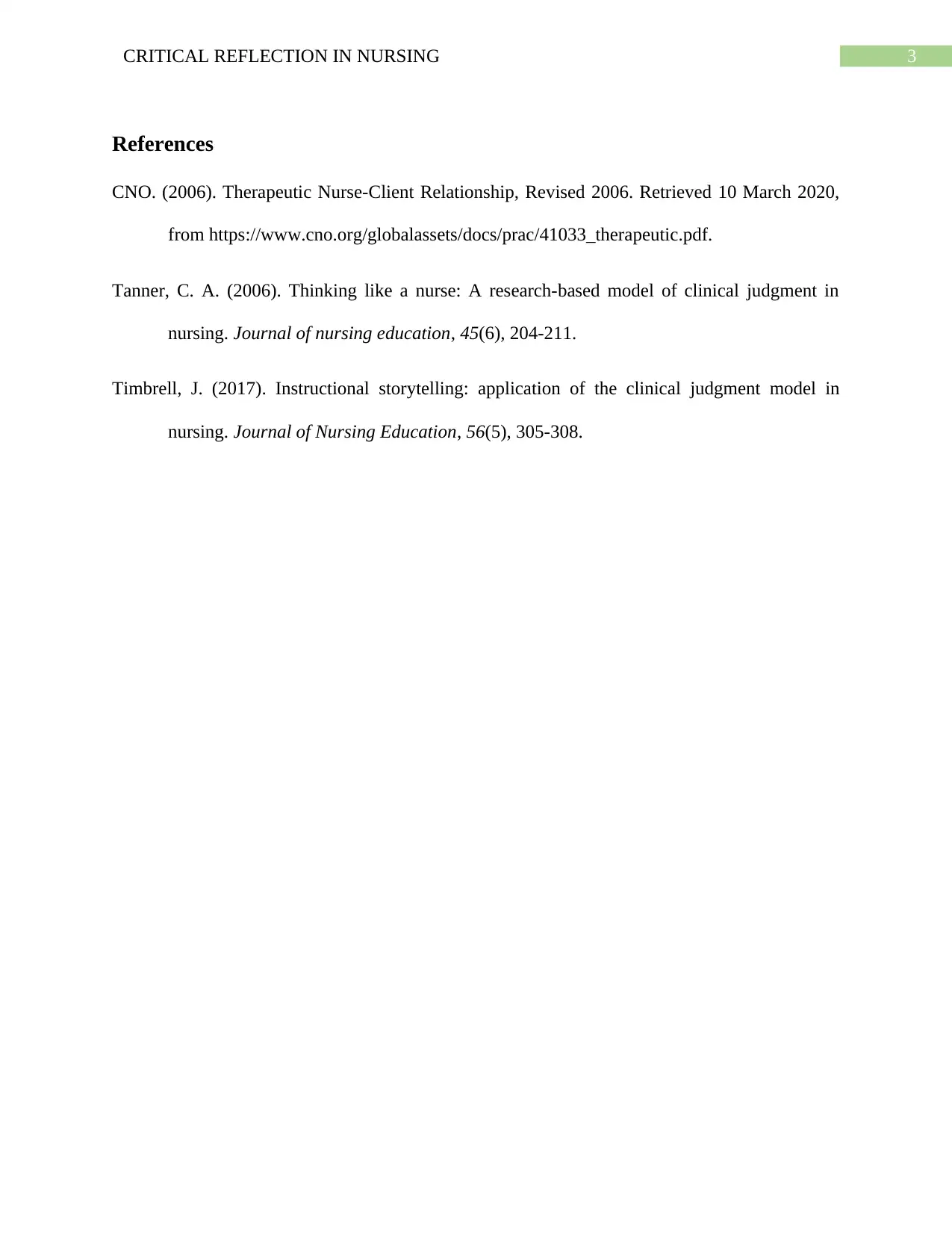Critical Reflection on Therapeutic Nurse-Client Relationship - Nursing
VerifiedAdded on 2022/08/18
|4
|573
|12
Homework Assignment
AI Summary
This assignment is a critical reflection on the 'Therapeutic Nurse-Client Relationship' guideline provided by the College of Nurses of Ontario (CNO, 2006), viewed through the lens of Tanner's (2006) Clinical Judgment Model. The student analyzes the importance of empathy, patient-centered care, professional intimacy, and nursing power, emphasizing the need for nurses to maintain professional boundaries despite the potential for patients to misunderstand the therapeutic relationship. The reflection addresses the potential for nurses to inadvertently cross boundaries, leading to inequitable care. The student discusses the importance of interpreting situations where boundaries may be unclear and responding appropriately to prevent unethical practices. The assignment concludes by highlighting the key learnings regarding professional intimacy, patient-centeredness, empathy, and nursing power, and how they apply to future professional practice.
1 out of 4








![[object Object]](/_next/static/media/star-bottom.7253800d.svg)